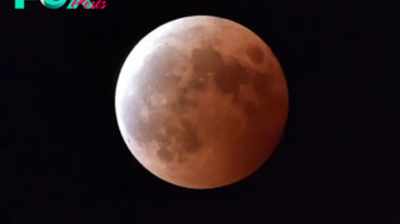Technology
New 'petabit-scale' optical disc can store as much information as 15,000 DVDs
Scientists have developed a new type of optical disc that can increase information storage capacity to the "petabit" level — 125 terabytes of data, or the combined storage capacity of about 15,000 DVDs.
Optical discs, such as DVDs and Blu-ray discs, are durable and inexpensive. A standard single-layer Blu-ray disc can store 25 gigabytes. By comparison, some USB flash drives can store 1TB, and hard disk drives (HDDs) can hold up to 16TB.
But a team of scientists has created a new type of material, called "dye-doped photoresist with aggregation-induced emission luminogens" (AIE-DDPR) with a high areal density (the amount of data that can be stored in a given area) that can offer far denser storage capacity than typical HDDs).
Given the increasing amount of data we generate each day, from instant messages to streaming video, AIE-DDPR optical discs have the potential to revolutionize data storage. Optical discs take up less space than current storage methods, be more environmentally friendly and could become less expensive than data storage arrays.
They described the details in a paper published Feb. 21 in the journal Nature.
To enable nanoscale writing, recording information on an optical disk at the molecular level, AIE-DDPR comprises two chemicals called 2-isopropylthioxanthone (ITX) and dipentaerythritol penta-acrylate (DTPA). ITX is an efficient photoinitiator, in that it reacts when exposed to light, such as that from a laser beam. DTPA is a monomer — a small molecule — with a high photosensitivity, meaning it reacts strongly to light. In effect, the two combine to enable more information to be stored more densely than ever before.
Related: 'Universal memory' breakthrough brings the next generation of computers 1 step closer to major speed boost
For nanoscale reading, a chemical called hexaphenylsilole (HPS) and a new material called AIE luminogens (AIEgens) were incorporated into the film. AIEgens already have an incredibly high fluorescence — a high absorption rate of electromagnetic radiation — but this was further enhanced using a highly focused laser beam that fired in bursts lasting a femtosecond (one-millionth of one-billionth of a second) during the writing process. This resulted in a far denser means of storing information on an optical disc.
The scientists used multilayer nanoscale writing and reading, storing information in multiple layers at the molecular scale, to increase the disc's storage density. By reducing the distance between layers to 1 micrometer (one-thousandth of a millimeter), the research team stored and retrieved 100 layers of data. The storage capacity was further expanded by storing information on both sides of the disc, much like a vinyl record.
—Experts divided over claims of 1st 'practical' algorithm to protect data from quantum computers
—World's 1st PC rediscovered by accident in UK house clearance nearly 50 years after last sighting
—World's 1st fault-tolerant quantum computer launching this year ahead of a 10,000-qubit machine in 2026
Using multilayer nanoscale writing, the scientists stored more than 1 Petabit of data on a single AIE-DDPR disc. This is more than the capacity of 5,000 Blu-rays.
To be commercially viable, the writing speed will need to be improved and made more energy efficient. The team hopes to accomplish this by using a far more precise laser beam than was used in the experiment.
Given the increasing amount of data we generate each day, from instant messages to streaming video, AIE-DDPR optical discs have the potential to revolutionize data storage. Optical discs take up less space than current storage methods and could become less expensive than data storage arrays.
-

 Technology14h ago
Technology14h agoApple offers fix after iPhone users report missing iCloud notes | The Express Tribune
-

 Technology1d ago
Technology1d agoBluesky’s rise: why users are migrating from X? | The Express Tribune
-

 Technology1d ago
Technology1d agoNorth Pole shift towards Russia alarms scientists, potentially disrupting smartphone accuracy | The Express Tribune
-

 Technology2d ago
Technology2d agoMajor brands return to X after one-year gap | The Express Tribune
-

 Technology2d ago
Technology2d agoChina tests building Moon base with lunar soil bricks | The Express Tribune
-

 Technology2d ago
Technology2d agoGet chronic UTIs? Future treatments may add more bacteria to your bladder to beat back harmful microbes
-

 Technology3d ago
Technology3d ago2024’s final supermoon visible tonight in Pakistan | The Express Tribune
-

 Technology3d ago
Technology3d agoEU fines Meta €798 million for Facebook Marketplace's 'abusive practices' | The Express Tribune



























